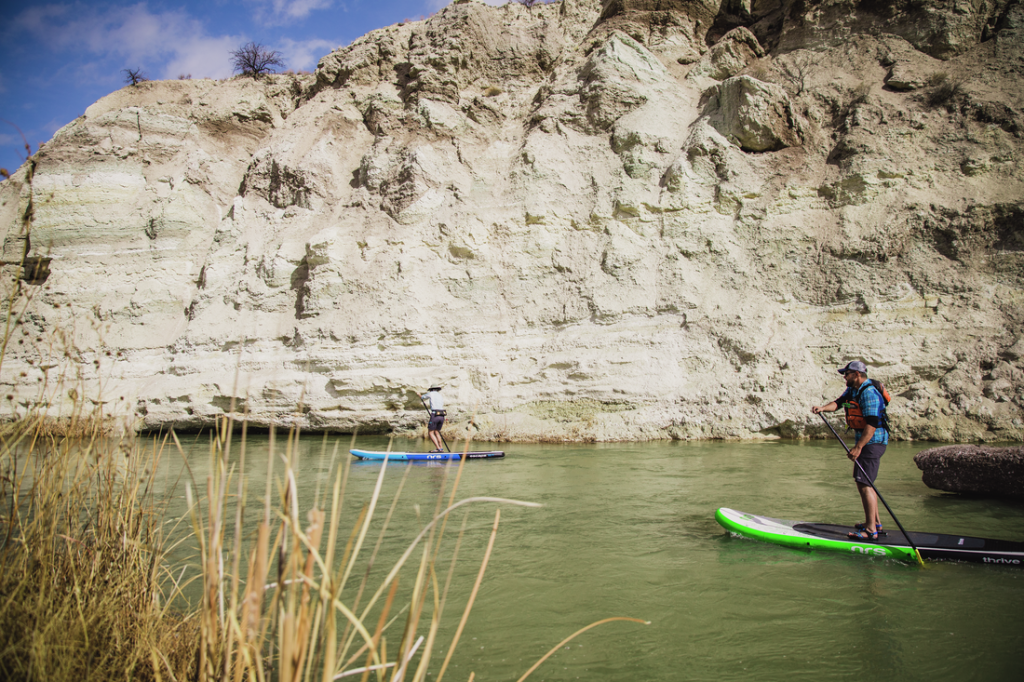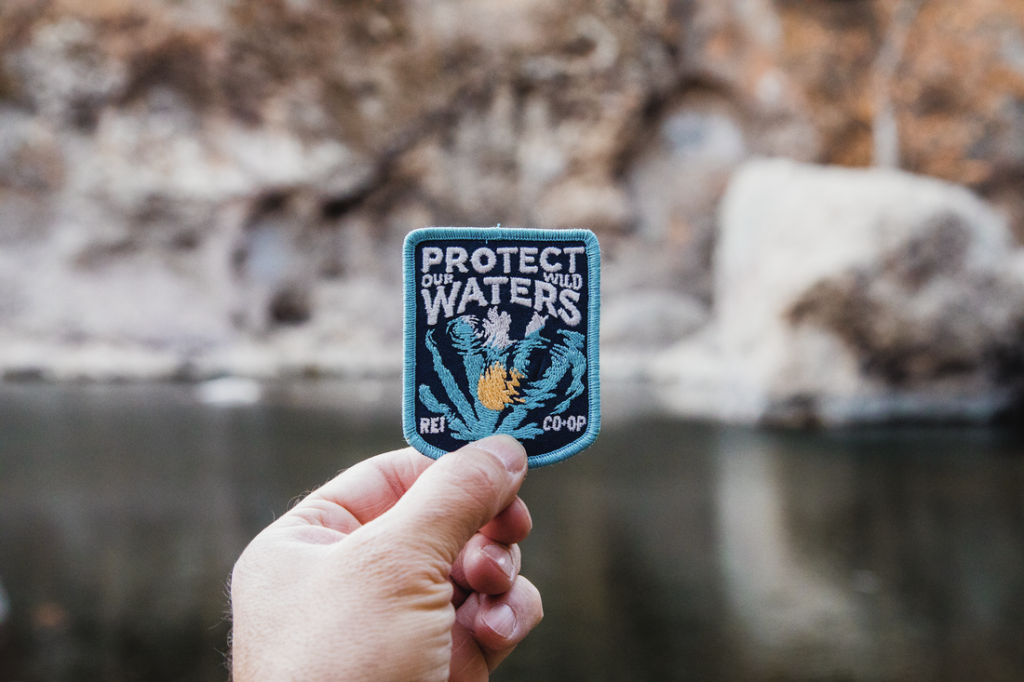Maija Wade met her husband 20 years ago in a raft on Oregon’s fast-flowing North Santiam River. He was the trip captain, she was an outdoorsperson looking to find adventure away from the party scene at her school, Oregon State University. “It was this rainy Halloween day,” she began, “we were all doing this incredible challenging thing together—rapids in the rain in October in the Pacific Northwest. Brian was this fearless, positive champion of being able to do it. I fell in love with him.” Almost all of us have stories connecting us to rivers. And a new initiative aims to turn those stories into protections for our beloved free-flowing rivers.
Fifty years ago, in 1968, Congress established the Wild and Scenic Rivers Act to preserve free-flowing rivers that exhibit outstanding natural, cultural and recreational values. Today, the National Rivers System protects 12,734 miles of rivers—less than one percent of American rivers. The Middle Fork of the Salmon in Idaho, the Chattooga in North Carolina, South Carolina and Georgia and the Tuolumne in California are among the nation’s 208 wild and scenic rivers.
To mark the 50th anniversary of the act, conservation organizations and outdoor businesses came together in support of the 5,000 Miles of Wild initiative, which aims to designate 5,000 new miles of rivers as wild and scenic by 2020 and collect 5,000 stories about rivers this year—using storytelling as a catalyst for change.

“Everyone has a river story—that might be because you love to paddle or because you hike, camp or trail run along a river. Rivers are just like trails, they connect our nation to one another and to our public lands,” said Taldi Walter, government and community affairs manager for REI. And storytelling, especially when a large number of those stories are sent to lawmakers, can make a difference. “Sharing personal stories is a way to show decision-makers that we have broad and diverse support for protecting rivers,” said Amy Kober, national communications director for American Rivers, a nonprofit organization that protects, restores and conserves our nation’s rivers.
A wild and scenic river designation prohibits the construction of new dams or projects that would impede the river’s free-flowing state, water quality or resource values. It also protects a quarter-mile buffer of land along the river and spurs the development of a locally driven management plan for the river, or ways to protect the river that sit well with local communities. Existing uses of the river, like fishing, ranching and recreation, can continue. “One of the benefits of the management plan is it gets people to talk and work together to strike the balance so that all the uses that have been happening on the river can continue,” Kober said.
There are two ways a river can be designated as wild and scenic. First, if a river needs protection, the community can put together a proposal and get lawmakers to introduce a bill to Congress for a vote. The second way a river can be designated is through land managers. If the land management agency determines that a river they oversee deserves to be protected, they can manage that river as if it were designated as wild and scenic. Once managed that way, it’s easier to make the case to introduce the river to Congress for permanent protection.
Why protect rivers in the first place? Thomas O’Keefe, PhD, Pacific Northwest stewardship director for American Whitewater, believes it’s important to protect rivers as wild and scenic because they provide the free-flowing landscape for generations of memories to be made. “When I think about the moments in our lives that define who we are, so many of them revolve around rivers. And those experiences we have become the stories we share and tell,” he said.

Protecting 5,000 miles of river might seem like a daunting task. But organizers of the 5,000 Miles of Wild effort have a plan to make it happen. There are three different types of river miles that make up that big number. The first 1,187 river miles are rivers already awaiting legislative action in Congress; one example is East Rosebud Creek in Montana, which has already been approved for protections by the Senate and is awaiting a vote in the House. The second 1,767 river miles are places where local community groups and river advocates have identified opportunities for a designation, and they’re lobbying Congress to introduce a bill. The third 2,519 river miles are rivers on public lands that are up for land management inventories. All of these miles add up to more than 5,000 miles of river that advocates are working to protect by 2020.
You can help support the effort in a few different ways:
- Share your river story. Whether in urban or rural environments, big rivers or small creeks, everyone has a river story. Share your story and show the world how rivers run through all of our lives. The 5,000 Miles of Wild campaign will share these stories with legislators.
- Sign the petition. The petition asks Congress to protect 5,000 miles of wild and scenic rivers and one million acres of riverside lands. Make your voice heard by your lawmakers.
- Shop the collection. Employee-owned NRS (Northwest Rivers Supplies) is proud to support American River’s 5,000 Miles of Wild initiative with a limited-edition paddle board. REI is also supporting the 5,000 Miles of Wild Campaign: 5% of the purchase price of these products in 2018 will go toward the campaign. And with a new special-edition sandal created in collaboration with NRS, Chaco is giving back 10% of sales to support American Rivers.
Maija’s river story didn’t end when she met her husband on the Santiam River two decades ago. They’re now preparing to take their two sons, ages 6 and 10, for four days on the wild and scenic Deschutes River, a trip the couple has taken many times over the course of their long love story. This time, they’re taking both of their grandfathers too, making it a true family adventure. “There’s something magical about the dynamic nature of rivers, and the fact you can be sitting on the riverbank and there’s always something new,” Maija said. “It causes our family to really focus on the environment we’re in. Because it literally carries us away. Which, of course, is what we’re after.” For Maija, rivers connect families. Read the rest of her river story here.
Your River Stories
These are some of our favorite stories that have been submitted to the 5,000 Miles of Wild campaign.
“I truly believe rivers connect us. They connect us to each other and to our history and to the planet … And they connect us to ourselves … By taking us places where there are no roads and no rails, where we get to sleep unter the ‘river of stars,’ they connect us to our soul and to our spirit,” wrote Kimberley Milligan in her river story.
“You can’t deny the restorative power of being outdoors, and for me, being near a river. There’s a marked change when you move into the presence of a river. The foliage, the sounds, and even the air changes as you feel the cool breeze blowing off the water. It’s a physical, moving experience, and for me embodies the very best of what a life outside is all about,” says REI CEO Jerry Stritzke. “Ensuring that future generations have access to these places will help create better stewards of the planet as well as more fulfilled, complete people.” Read the rest of his river story.
Read more about Jimmy Carter’s river story.
“There is a turquoise pool at the confluence of the Shining Creek and the East Fork of the Pigeon River in the Shining Rock Wilderness … Thirty years ago my father proposed to my mother near the union of these two streams and since then it has grown to occupy a special place in my family lore. … Even now, from halfway across the country, it still holds a certain gravity that keeps pulling me back, home,” wrote John Burrows in his river story.
“After fifteen years on the waitlist for the Grand Canyon, [my mom] had finally been selected for a permit. Shortly after my 16th birthday my family, cousins, uncles, aunts, and family friends began our fourteen-day excursion down the Grand Canyon … Successfully completing our Grand Canyon adventure felt empowering like no other experience had felt before. Our trip down the Grand Canyon strongly influenced the lives of each cousin and friend … so much so that four of us … are current or were previously, whitewater river guides on a stretch of the Colorado River several hundred miles north. We are so grateful to have been raised to respect and understand the rivers and the experience of rafting, such as the Grand Canyon, which allows us to spend our summers as guides, sharing our passion for the river with others,” wrote Kathryn Conn in her river story.


